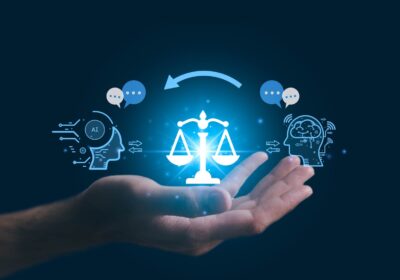Empowering Tomorrow’s Leaders: Education and Training for Talent Growth

June 18, 2024
SEB Marketing Team
Employees are the most valuable asset of any organization, which is why companies must prioritize talent development to maintain a competitive edge. Human Resources professionals and managers have an opportunity to increase retention, minimize skill gaps and improve productivity by developing their current talent with development strategies. With technological advancements and evolving educational paradigms, there are more tools and methods available now than ever to foster continuous learning and development.
What is Talent Development
At its most basic, talent development is enhancing the skills and strengths of current employees by offering education and training so they can better support their organization’s growth. Through a combination of training programs, and various professional development initiatives, talent development aims to maximize each employee’s potential and performance.
The Benefits of Talent Development
By investing in their workforce, companies can not only boost employee satisfaction and retention but also ensure they remain agile and competitive in an ever-changing market. Effective talent development focuses on developing a personalized learning plan which invites employees to focus on their career development. Additionally, this allows the organization better opportunities to utilize their resources effectively ultimately leading to improved performance and innovation. Not to mention, investing in current talent reduces recruitment costs, shortens onboarding times, and enhances overall productivity because employees who feel valued and supported are more likely to stay with the company.
Robust talent development strategies are essential for cultivating a resilient, future-ready workforce and achieving sustained organizational growth. Here are some innovative approaches to talent development through education and training:
Personalized Learning: Personalized learning platforms are both accessible and effective for tailoring educational experiences to the unique needs, preferences, and career aspirations of each employee. Advanced technologies such as data analytics and artificial intelligence can be used to assess individual performance, identify skill gaps, and recommend targeted learning paths. This customized approach ensures that employees receive relevant and effective training, which not only enhances performance in their current role, but also prepares them for future challenges and opportunities which supports creating a dynamic and adaptive workforce.
Microlearning: Building on the personalized learning tool is the concept of microlearning. This approach is an effective way to deliver training in small, manageable chunks which caters to the short attention spans and busy schedules of modern employees. Often these stand-alone modules last no more than five to ten minutes and focus on one specific skill or piece of information. This makes it easier for employees to fit learning into their daily routines and supports a culture of growth.
Mentorship Programs: Mentors provide employees with guidance, support, and insights from more experienced colleagues. They also foster a culture of continuous learning. Structured mentorship programs can be tailored to match mentors and mentees based on specific skills, career goals, and personality traits, ensuring a productive and supportive relationship while virtual mentorship expands the reach and flexibility of these programs. This allows for meaningful connections regardless of geographic location. Mentorship programs not only enhance individual employee performance but also strengthen organizational culture and cohesion by playing a needed role in developing the next generation of leaders within the company.
Virtual Reality (VR) and Augmented Reality (AR) Learning Experiences: Immersive technologies like VR and AR provide engaging and interactive learning experiences. VR allows employees to practice skills in realistic, simulated settings, without the risks associated with real-life scenarios. AR, on the other hand, enhances on-the-job training by providing real-time guidance and instructions directly within the employee’s field of view with a digital information overlay. These technologies cater to diverse learning styles, can significantly improve retention and comprehension of complex information, and can be easily updated and scaled, ensuring that employees always have access to the latest information and techniques.
Gamification: Gamification applies game design elements to non-game contexts, making learning more engaging and motivating. By incorporating features such as point systems, badges, leaderboards, and rewards, gamification taps into employees’ competitive and collaborative instincts, creating more engagement. Scenario-based games and simulations enable employees to practice problem-solving and decision-making in a risk-free, yet immersive environment, fostering deeper learning and retention. Using gaming strategies at work can boost morale and cultivate a dynamic learning culture that promotes ongoing development and performance excellence.
Investing in innovative methods and tools for talent development is not just a strategy for staying competitive—it’s a commitment to your employees’ growth and satisfaction. By leveraging personalized learning, mentorship programs, immersive technologies, and gamification, organizations can create a dynamic and effective environment that empowers employees to reach their full potential. As the landscape of work continues to evolve, so too must the approaches to retaining and developing top talent which are the key to any organization’s development and success.
Post navigation
Related Posts

3 Keys to Sustainable Excellence of High-Performance Teams
You spent a considerable amount of capital and time hiring the best engineers, the most…

Your 5-Point Generative AI Policy Checklist for HR and Tech Leaders.
C'est officiel : l'Intelligence Artificielle générative (IAg) n'est plus un concept futuriste—c'est un super copilote…

The Psychological Safety Re-Check: Why Even Top Teams Need a Periodic Vulnerability Audit
You’ve built a rockstar team. They hit their numbers and they crush their goals. Congratulations!…
